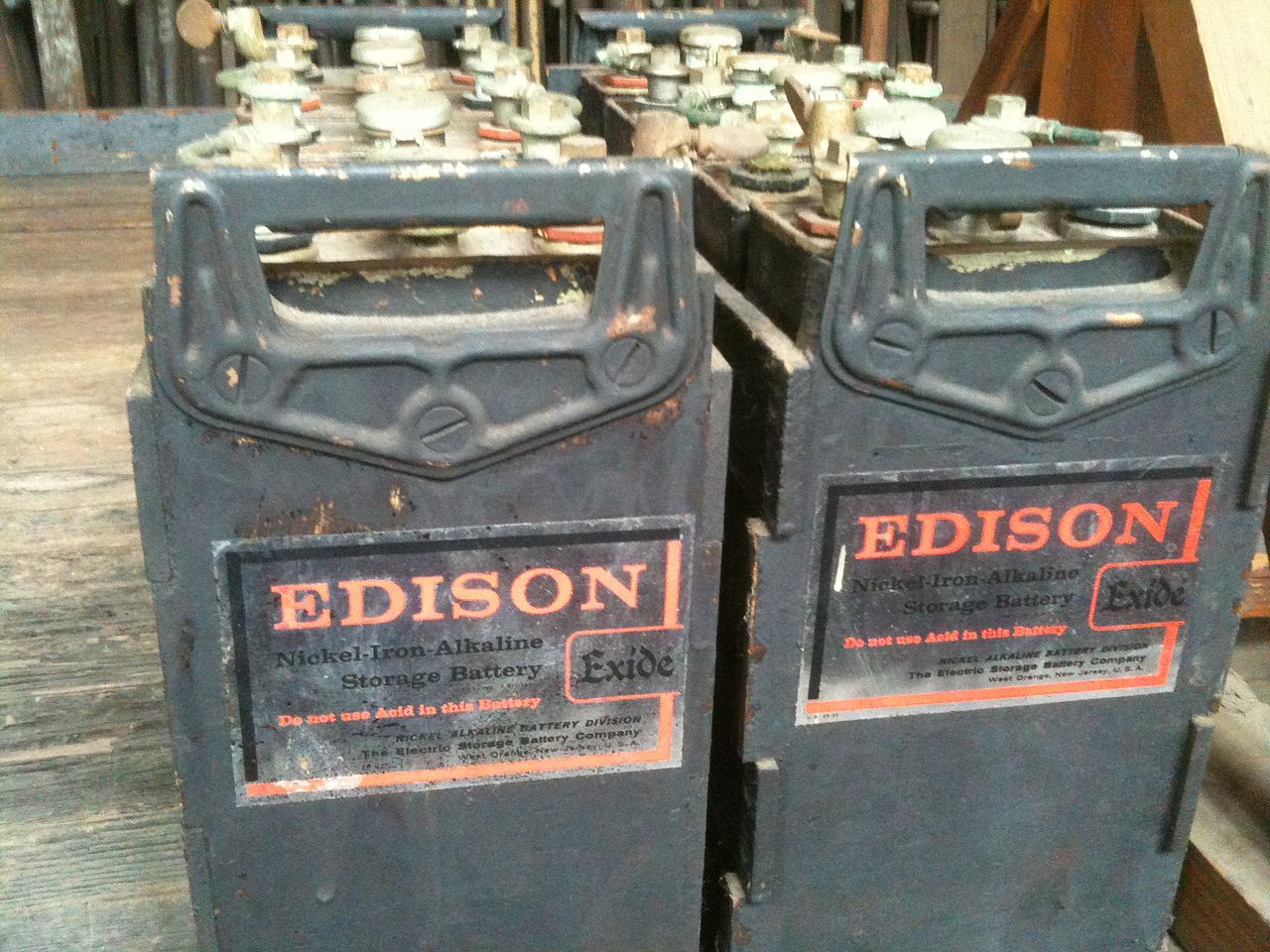Nickel-Iron Battery Chemistry
Nickel-iron batteries were invented by Thomas Edison in 1901, and were used in early electric vehicles. They were produced by the Edison Storage Battery Company from 1903 until 1972, and some of the original cells are still operable today.
The long lifetime of NiFe cells represents a significant advantage over all other battery technologies, including the ubiquitous lead-acid and lithium chemistries. Another advantage is that NiFe cells can be overcharged, or fully discharged, without any damage to the cell. The major disadvantage of NiFe cells is that they have a lower energy density (both by weight and volume), so they have been used primarily in stationary backup applications, as well as in locomotives.
Although the NiFe cells themselves are incredibly robust, their electrolyte (primarily KOH, sometimes supplemented with LiOH) slowly degrades over a ~10 year period and must be replaced. This degradation is thought to be due to absorption of atmospheric CO2, which when dissolved in water converts to carbonic acid, which in turn reacts with the alkaline electrolyte to produce carbonate ions.
The environmental sustainability of NiFe cells (which is already impressive due to their long lifetime and non-toxic electrode materials) could be further improved if the electrolyte did not require periodic replacement. We are therefore initiating an applied research effort to address the following questions:
- What is the exact relationship between carbonate concentration in the electrolyte and the storage capacity of a NiFe cell?
- Can we develop a simple and inexpensive method for quantitatively measuring the carbonate concentration in NiFe cell electrolyte?
- Can we develop a process to treat/purify the electrolyte to remove carbonate ions, thus restoring cell capacity without the need to change the electrolyte (analogous to dialysis of human blood)?
By answering these questions, we hope to enable users of NiFe cells to easily measure the "health" of their cells, and to treat their electrolyte when necessary...thus providing many decades of hassle-free performance with minimal cost and no downtime.

